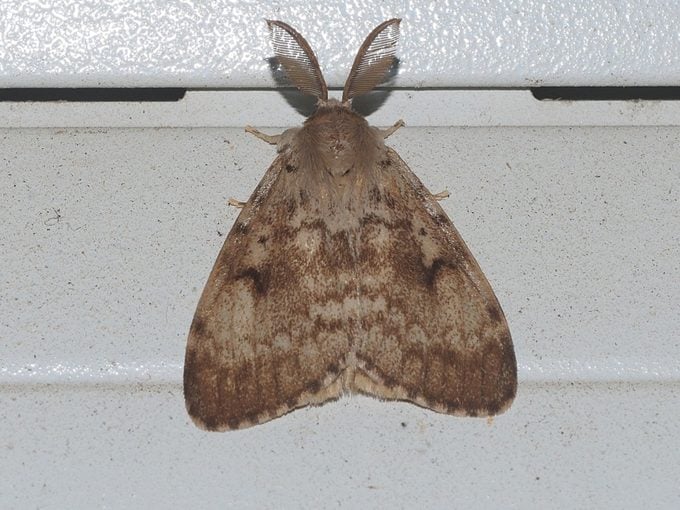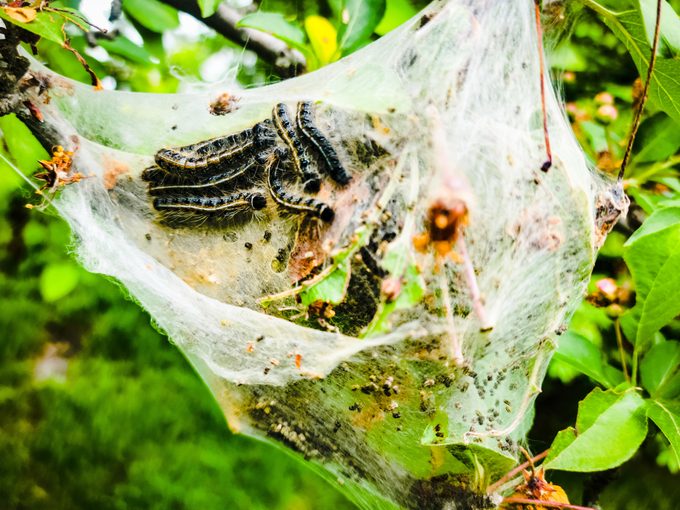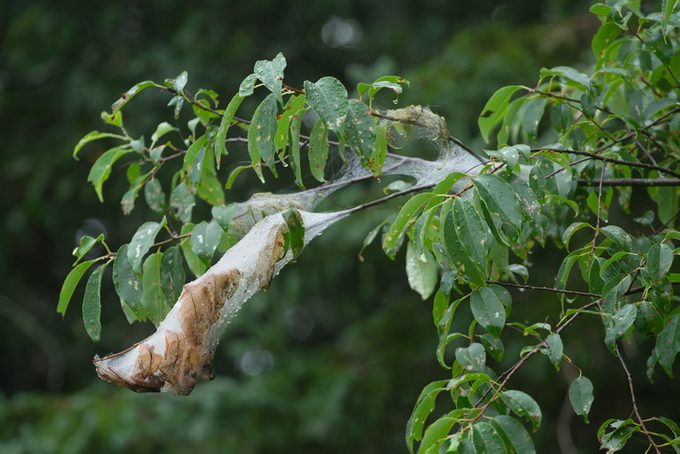Controlling Caterpillars: Garden Insect Pests
Updated: Aug. 30, 2022
Some moth caterpillars can be serious garden insect pests. Get tips for controlling spongy moths, webworms and eastern tent caterpillars.
We usually think of butterflies and moths as creatures of beauty as they flit about our gardens, feeding on and pollinating the flowers. While this is the case most of the time, a few are serious pests to plants and trees. Moth caterpillars are probably the bigger problem, including invasive spongy moths, webworms and the eastern tent caterpillar, but there are ways to manage them. In late winter or early spring, check shrubs and trees for these pests or their egg masses. Remove them early to spare plants down the road.
Discover 8 crazy cool caterpillars you could find in your backyard.
Spongy Moth

The spongy moth was introduced into Massachusetts in 1866 from Europe, and it has caused billions of dollars in damage to eastern forests, killing thousands of trees. The University of Wisconsin Division of Extension recommends that you treat egg masses with horticultural oil or carefully remove caterpillars and moths from trees and place them in soapy water.
Learn how to get rid of slugs and snails in the garden.
Eastern Tent Caterpillar

The eastern tent caterpillar, native to North America, is a common sight in early spring to people throughout the East. This pesky crawler defoliates cherry, crabapple, apple and other fruit trees from its highly visible web nests. Although most trees recover from this early defoliation, the silk nests are eyesores. Interestingly, birds won’t eat these hairy caterpillars because they can’t digest the sharp-pointed hairs that penetrate their stomach lining. To control eastern tent caterpillar outbreaks, check your small cherry and other fruit trees, and remove and destroy any egg masses you find.
See what a Sphinx moth caterpillar and pupa looks like.
Fall Webworms

Fall webworms are similar to the eastern tent caterpillar. They appear in fall, and the large nests of larvae are located at the ends of branches, usually enclosing leaves. This species is native to North America, and it feeds on more than 85 different species of trees. To control these moths, you should remove the nests. Also plant native plants that attract birds and other helpful predatory insects and parasites, as they will eat them.
Discover 10 interesting facts about hummingbird moths.
How to Prevent Caterpillar Damage
So what can we do to protect our plants? Pesticides are an option, but if you’re striving to go green and avoid harming many other beneficial species, consider some chemical-free alternatives. In maintaining beautiful yards, we have a tendency to want to spray for pests that occasionally wreak havoc on our plants. However, there are natural methods of control that won’t harm the environment. As with many pest species, picking caterpillars and eggs off the plants by hand will help. With webworms and eastern tent caterpillars, dispose of and destroy the entire nest.
Next, meet the milkweed tussock moth and caterpillar.



















